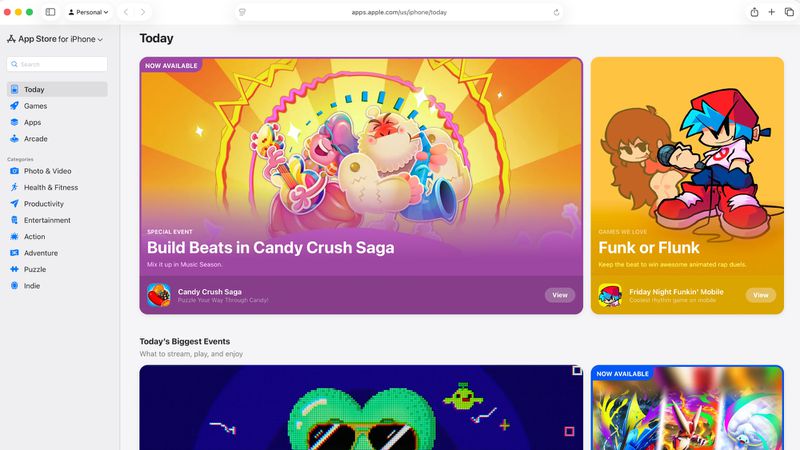
Apple has quietly (but massively) revamped its web presence, launching a full, rich App Store experience directly in your browser at the familiar apps.apple.com domain. This isn’t just a basic landing page anymore; it’s a game-changer for discovery, sharing, and the overall accessibility of the Apple app universe.
What’s New? A Full App Store Mirror in Your Browser
The previous App Store on the web was little more than a directory, offering individual product pages with minimal surrounding context. The new web interface is a dynamic, fully-featured replica of the App Store you know and love from your device.
- Platform-Agnostic Browsing: You can now browse and search apps for every major Apple platform—iPhone, iPad, Mac, Apple Watch, Apple TV, and even visionOS—all from a single website, regardless of whether you’re on a Windows PC, an Android phone, or a Linux machine. A simple dropdown menu lets you jump between storefronts.
- Editorial Curation: The beloved “Today” tab—featuring Apple’s daily editorial picks, interviews, and deep dives into apps and games—is now fully available on the web. This content was previously confined to the native apps.
- Rich Product Pages: App product pages have been dramatically improved. They are now media-rich, fast, and feature the same design language (including iconography for categories, awards, and App Events) as their native counterparts. High-resolution screenshots and detailed descriptions load instantly.
- Intuitive Search and Discovery: You can finally run a robust search across the entire App Store ecosystem using the native web search bar, making app discovery much easier than relying on third-party search engines.
Why This Matters for Users and Developers
This seemingly simple shift—moving the App Store from an app to a website—has profound implications for the entire ecosystem.
For the User: Seamless Discovery and Research
For customers, the new web interface solves a major friction point: research.
Imagine reading an article on your work PC about a must-have new iPad app. Previously, you’d have to remember the name, unlock your iPad later, open the App Store, and search for it. Now, you can simply click the link, get the full product details, confirm it’s the right app, and save the page, ready to download when you get to your Apple device.
It’s an enormous improvement for cross-device workflows, enabling people to discover and share apps more easily than ever before.
For the Developer: Increased Visibility and Marketing Power
Developers are arguably the biggest winners here.
- Search Engine Optimization (SEO): By offering a rich, crawlable web presence, Apple dramatically increases the likelihood of apps being discovered through Google, Bing, and other search engines. More organic search traffic means more eyes on your app without relying solely on App Store advertising.
- Simplified Sharing: Sharing an app with a friend is now as easy as sending a direct, clean URL. No more clunky redirects or requiring the recipient to have an Apple device to view the page. This simplifies social media promotion, email marketing, and blog linking.
- Cross-Platform Marketing: Developers with apps across multiple platforms (e.g., Mac and iPhone) can now direct users to a single, unified web portal that clearly links to both versions, making the entire product suite more cohesive.
The Final Takeaway
The new App Store on the web is more than a cosmetic update; it’s a strategic embrace of openness that aligns with modern web standards and addresses the global demand for easier, platform-agnostic discovery.
It removes a significant barrier to entry, allowing the App Store’s fantastic editorial content and vast catalog to reach a global audience, regardless of the hardware they are using at that moment. For developers, it means new, powerful channels for growth.
Head over to apps.apple.com today and take the new web experience for a spin—you might just discover your next favorite app while browsing on your laptop.







Comments 1